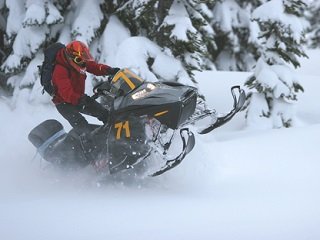 Snowmobiles with 3000 miles or more on the odometer are past that first flush of their youth, but performing regular service on them can keep them operating as reliably as ever. Your sled can stay in peak condition and will perform better with a little regular TLC!
Snowmobiles with 3000 miles or more on the odometer are past that first flush of their youth, but performing regular service on them can keep them operating as reliably as ever. Your sled can stay in peak condition and will perform better with a little regular TLC!
Change the chain case oil. Heating and cooling cycles can break down the lubrication, and it’s normal to see a gooey hunk of oil and small metal shavings on the plug. But these metal slivers and contamination from water can eventually harm the sprockets. Most snowmobiles have a drain plug to make the process simple. The Ski-Doo REV-X and some other models need to have the chain case cover removed for this service. If you drive an Arctic Cat with the ACT drive system, have it flushed and filled.
While you’re changing the chain case oil, set the chain tension. A loose chain can skip and cause grinding on the sprockets. Loose chains are an especially serious problem in mechanical reverse systems. When they get too slack, forward and reverse gears won’t engage.
Take a few minutes to add fresh grease to the chassis. This is a simple and easy maintenance that will keep your sled problem-free. Be sure that you hit all of the zerks in the front and rear suspension, and get the steering components, driveshaft and jackshaft to keep a bearing from falling and leaving you stranded. The driveshaft can spin for a lot of miles, but without grease it will eventually crack.
Inspect the Hyflax – the slippery surface on the bottom of the suspension rails that the track slides against. You’re looking for a wear line on the outer edge. If there is less than 1/8 inch of hyflax material, replace it. When the hyflax wears down too far, the tracks and rails will suffer damage that can’t be repaired.
Another easy inspection is the sleds wear bars, and you should check them regularly. There should be cutting carbide on each bar, and it’s time to replace when the carbide is nearly gone. The wear bars help the snowmobile withstand abuse in low snow conditions; the right ski normally wears more quickly because it rides along road shoulders and is more likely to make contact with pavement.
Check your lights – headlights, taillights and brake lights are easy to replace and key to your safety when you’re returning home at dusk after a long day on the trail.








